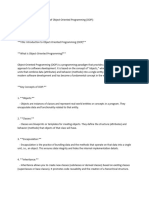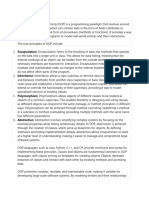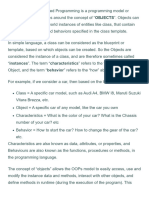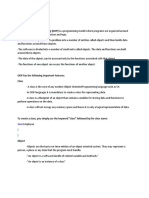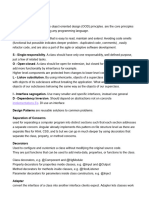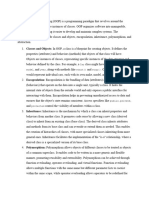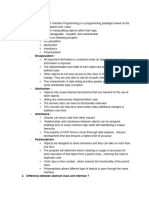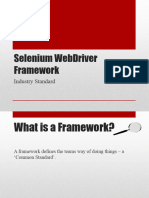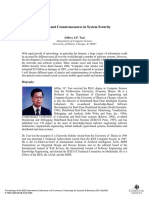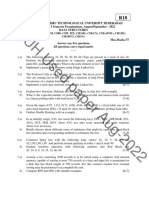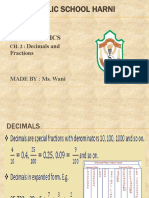0% found this document useful (0 votes)
4 views3 pagesObject
The document outlines key Object-Oriented Programming (OOP) concepts such as classes, objects, encapsulation, inheritance, polymorphism, abstraction, method overloading, method overriding, constructors, and destructors, which are essential for interviews. It also introduces the Page Object Model (POM) design pattern used in test automation, emphasizing its benefits like separation of concerns, reusability, and enhanced maintainability. A simplified example of a LoginPage class in JavaScript illustrates how POM organizes test code by encapsulating page elements and functionality.
Uploaded by
IzabellaMolnarCopyright
© © All Rights Reserved
We take content rights seriously. If you suspect this is your content, claim it here.
Available Formats
Download as DOCX, PDF, TXT or read online on Scribd
0% found this document useful (0 votes)
4 views3 pagesObject
The document outlines key Object-Oriented Programming (OOP) concepts such as classes, objects, encapsulation, inheritance, polymorphism, abstraction, method overloading, method overriding, constructors, and destructors, which are essential for interviews. It also introduces the Page Object Model (POM) design pattern used in test automation, emphasizing its benefits like separation of concerns, reusability, and enhanced maintainability. A simplified example of a LoginPage class in JavaScript illustrates how POM organizes test code by encapsulating page elements and functionality.
Uploaded by
IzabellaMolnarCopyright
© © All Rights Reserved
We take content rights seriously. If you suspect this is your content, claim it here.
Available Formats
Download as DOCX, PDF, TXT or read online on Scribd
/ 3







